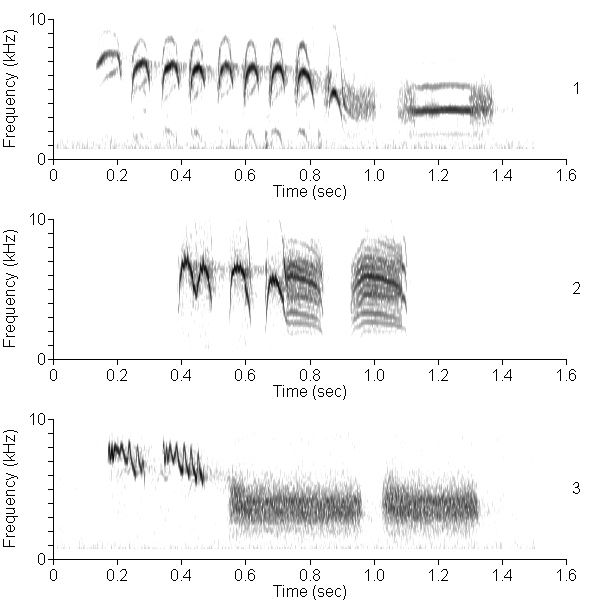Two days ago we discussed the "fee-bee" songs of the Black-capped Chickadee that I had recorded in 1983 in West Virginia. Two days and ten years later I was in California, trying to find out if the Chestnut-backed Chickadee even had a song. Sandy Gaunt and I had been asked to help with the vocalizations section of the Chestnut-backed Chickadee account in the Birds of North America series . "Everyone knew" this chickadee did not have a tonal song like the ones produced by Black-capped, Carolina, and Mountain Chickadees. But, because a misidentified song had been published as belonging to the Chestnut-backed in 1983, we needed to "prove" what "everybody knew" before stating it in this authoritative series.
It's hard to "prove" a negative, of course, but our best bet was to find out what sounds they actually use for dawn-singing. Birds sing primarily to advertise possession of a territory and to invite the opposite sex to join in a reproductive project (making babies). (Usually it is the males that sing, and that is the case in the Paridae.) They sing most exuberantly and consistently before sunrise early in the breeding season. Unfortunately, neither of us lived within the range of this species, and none of the birders and ornithologists we consulted knew a thing about its dawn-singing. (The recording above is still the only one in the Ebird collection that's tagged as "dawn song.")
So, I worked a recording expedition into another trip and here I was, at dawn in the Santa Lucia Mountains, making this recording. It is not a great recording, but it's important to me because it sealed the deal. For the third straight morning I heard nothing but this faint, high-pitched ditty. Each of a dozen or so birds I recorded was singing, to be sure; they were just doing it with the initial notes of their chickadee call, not with a completely different vocalization-type such as the "fee-bee" of the Black-capped Chickadee. All chickadees, as you may have assumed, have a chickadee call. The versions used by Mountain, Chestnut-backed, and Mexican Chickadees are displayed from top to bottom in the figure below.

W. John Smith introduced the idea of "singing without song," which is what the Chestnut-backed Chickadee does. Singing is a behavior; it's the practice of delivering a stereotyped signal in a stylized cadence from a position with good transmission attributes. Prairie birds often sing on the wing, but woods birds usually just broadcast from well up in a tree. Songs are usually complex sounds (or other signals) used primarily for singing, while calls are simple sounds used to communicate about specific activities, such as eating, sex, and taking cover. Most species, e.g., warblers and sparrows, use songs for singing and calls for calling, but chickadees mix things up. Carolina Chickadees fold their songs, chickadee calls, and gargle calls into their dawn-singing, while the Chestnut-backed Chickadee, which we now know doesn't have a song in its repertoire, keeps it simple. Why do they have no song, and beyond that, why do they keep it so simple at dawn? I don't know, but rest assured that little guy is singing his heart out.